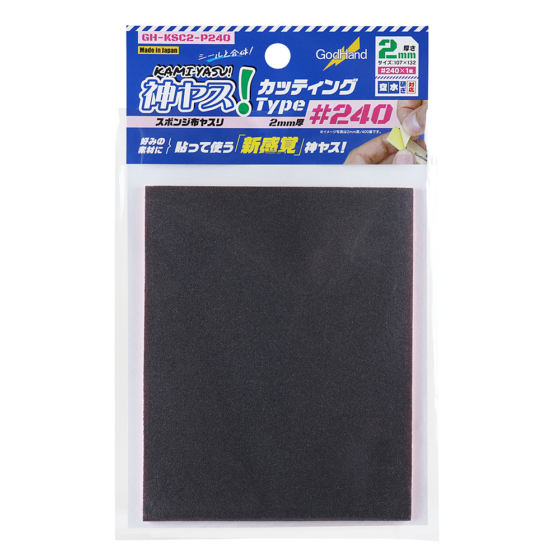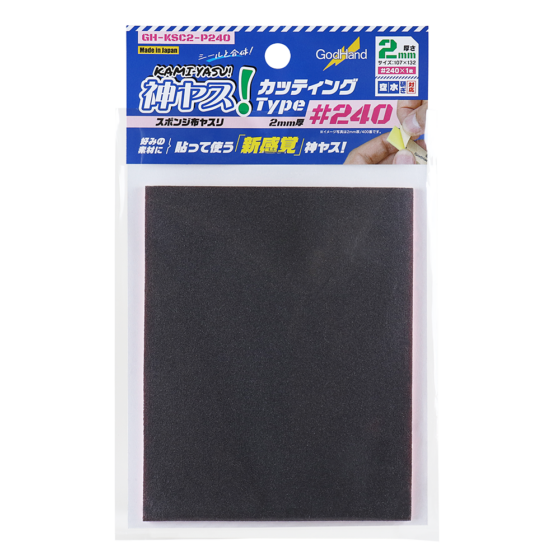▼Difference from sanding flat paper
Sanding flat paper is suitable for sharpening sharp surfaces and protruding edges, but since it has zero cushioning, it cannot be used to smooth slightly undulating surfaces.
If you apply sponge sandpaper to the backing, you can adjust the surface by leaving a slight curve, connecting certain planes and sides to create a smooth "edge" appearance.
▼Difference from 10mm thick cloth sandpaper
10mm sponge sandpaper is more convenient for handling fine details, but when a "flat surface" is required, 2mm thick sponge sandpaper is more suitable for sticking to the backing plate. Even when smoothing the surface near the edge, it is not easy to deform the edge.
Excellent compatibility with commercially available electric sanders!
Simply cut according to the shape of the tip mandrel of the electric sander, and it can be immediately attached to the mandrel.
Sponge sandpaper is very durable and complements the electric sander sharpened by high-speed sandpaper.
・Size: Approx. 107×132mm
・Thickness: 2mm
・No.: #240
・If the product is immersed in water for a long time or exposed to solvents such as paint, the glue may melt and fall off.
・Keep out of reach of children.
・Please wear safety glasses and a dust mask when using.
・Scratches and dirt on the surface of the sponge sandpaper do not affect its use.
・If there is glue residue after peeling, use isopropyl alcohol to completely remove the glue.
・If you stick it on fragile objects or force it, it may cause injuries or it may not stick firmly, so please be careful about what you stick it to.
・Depending on the object, it may not stick, so please try to use tape to confirm whether it can stick before use.


